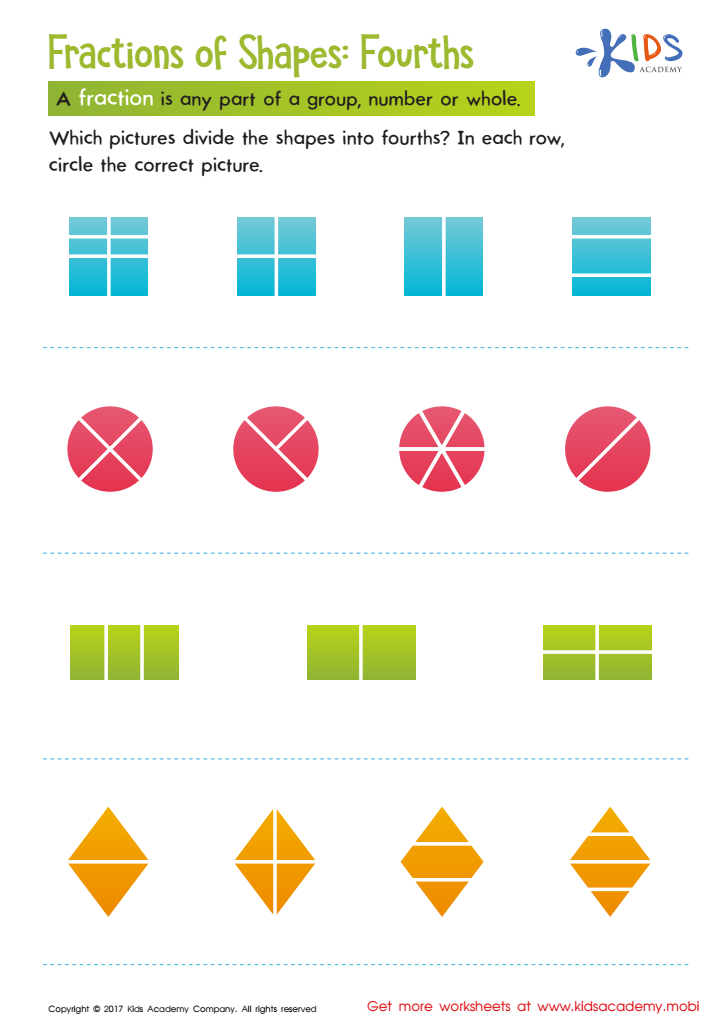Recognizing shapes Geometry Worksheets for Ages 5-7
4 filtered results
-
From - To
Introduce your child to the fascinating world of shapes with our "Recognizing Shapes Geometry Worksheets for Ages 5-7". Specifically designed for young learners, these worksheets help children develop essential early math skills. Through engaging activities, kids will explore various shapes, learn to identify and differentiate between them, and understand their properties. These printable worksheets provide a fun and interactive way to enhance your child's geometry knowledge while promoting critical thinking and problem-solving skills. Perfect for both classroom and home use, our resources ensure that your child builds a solid foundation in geometry through enjoyable and educational exercises.


Congruent Shapes Worksheet


Lines of Symmetry Printable


Geometry: part 1 Worksheet


Fractions of Shapes Worksheet
Recognizing shapes and basic geometry skills are foundational for children aged 5-7 and offer numerous cognitive, academic, and practical benefits. At this early stage, engaging with shapes enhances spatial awareness, aiding children in distinguishing and categorizing various objects in their environment. This foundational skill supports more complex mathematical reasoning, fostering a smoother transition to advanced math topics such as fractions, measurement, and geometry.
Additionally, shape recognition is essential in developing motor skills through activities like drawing, cutting, and assembling, which build hand-eye coordination and fine motor precision. Cognitive growth is similarly enriched as children learn to recognize patterns, an ability that is pivotal not only in mathematics but also in reading, writing, and the arts.
In a classroom setting, understanding shapes prepares children for cross-disciplinary learning. For instance, integrating geometry in arts and crafts can boost creativity, while in science, shapes help describe the physical properties of objects. On a practical level, being capable of identifying shapes strengthens problem-solving abilities, aiding kids in interpreting and interacting with their environment, like following a map or participating in sports.
Therefore, prioritizing shape recognition for young learners equips them with versatile skills that transcend mere academic achievement, nurturing well-rounded, critical thinkers prepared to navigate the complexities of their expanding world.
 Assign to My Students
Assign to My Students






























